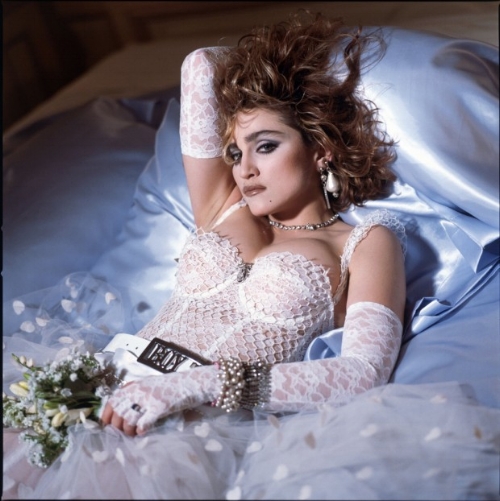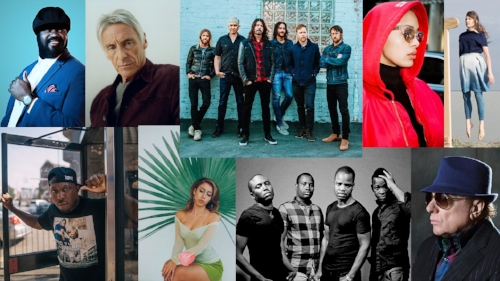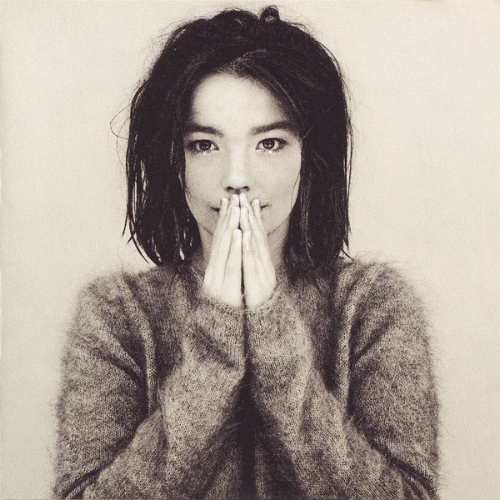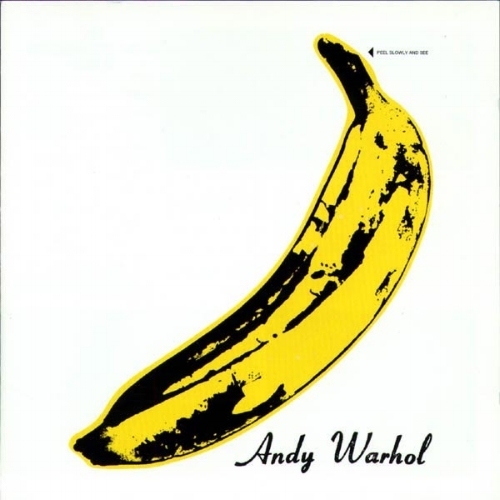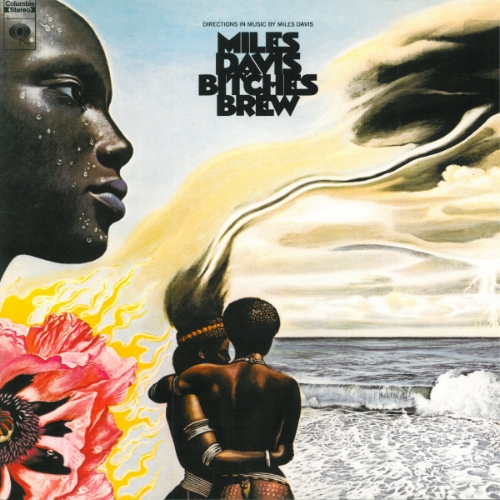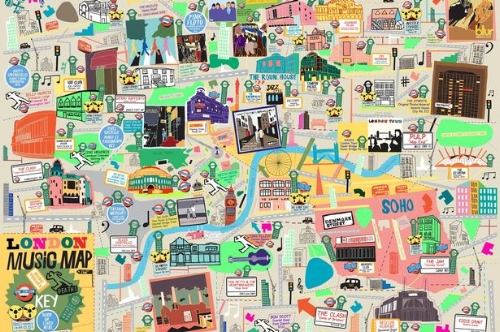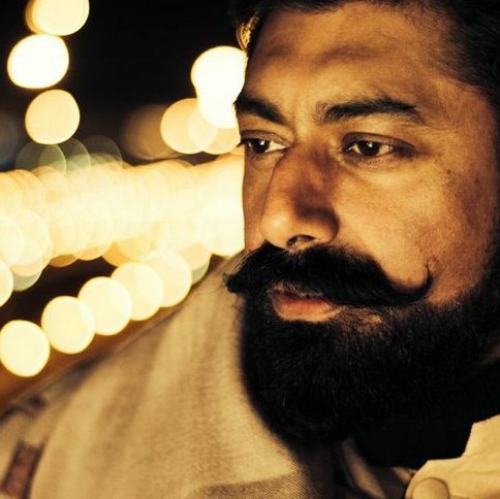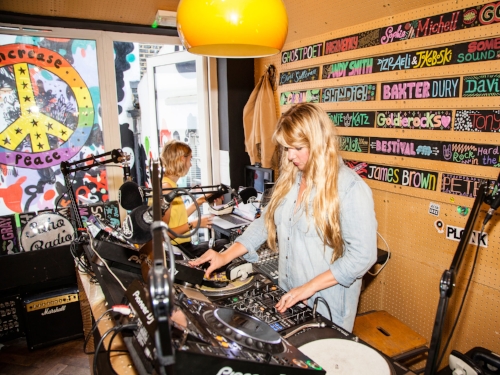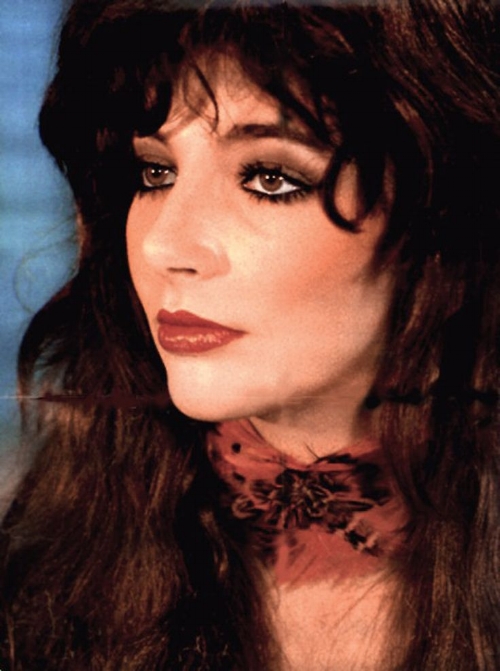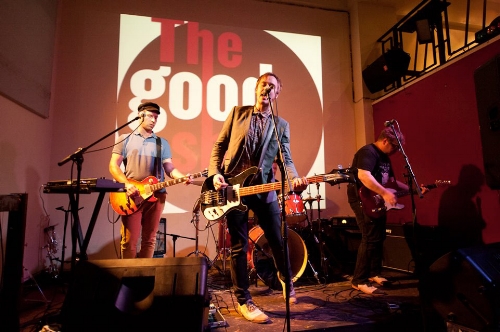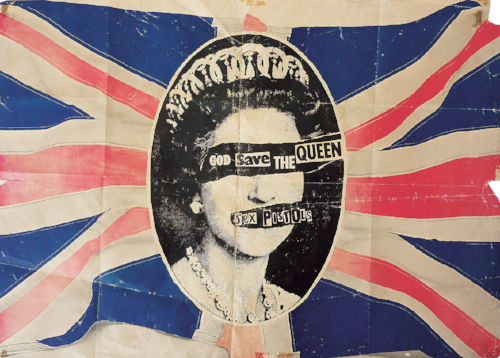FEATURE:
Madonna:
Madonna: For One, For All, For Everybody
________
THERE are few who can argue against the notion…
IN THIS PHOTO: Madonna (in 1983) during 'The Lollipop Session' shoot/PHOTO CREDIT: Deborah Feingold
Madonna helped transform music upon her arrival. The reason I am focused on her is that, on 6th October, it will be thirty-five years since her single, Everybody, was released. That was the lead-off track from Madonna's eponymous debut album and a song that helped kick-start a legendary and enduring career. Holiday would arrive a year later but one cannot underestimate the importance of Everybody. The album, Madonna, was well-received by critics and gained a huge number of fans. In 1982, aged twenty-four, Madonna was living in New York and trying to establish a music career. Her then-boyfriend Steve Bray, whom she was living with, became the drummer in her band - and, between them, they changed styles in an attempt to find their niche. Madonna had a rough tape with three songs on it including Everybody – and, after splitting with Bray and being dropped by Gotham Records (Madonna was signed to them but dropped as they were unhappy with her direction), she took matters into her own hand. Frequenting the Danceteria nightclub in New York; she convinced D.J. Mark Kamins to play the song, Everybody. The song went down well and from there Kamins decided he would get Madonna a record deal. Taking it to the boss of Island Records, Chris Blackwell – on the understanding Kamins would get to produce it – it was rejected.
They went to Sire Records who offered Madonna a deal and $5,000 in advance - $10,000 in royalties for every song she wrote. The twelve-inch single of Everybody was produced by Mark Kamins at Blank Tapes Studios, New York, and recorded and their own cost (Madonna helping foot the bill). Madonna and Kamins had misunderstandings during the sessions: each differed in regards what they wanted from the song and the direction it would take. It was, despite the uncertainty, released and became a big Dance hit. It was the start of a fantastic career and, whilst not her finest single, was the introduction of a stunning and iconic talent. Madonna was offered an L.P. deal following Everybody’s success and the incredible album, Madonna, was released. She was influenced by Dance-Pop and Post-Disco at the time but struggled to shake Disco – some of the album’s songs dated and using equipment that came off as dated. Madonna looks back at the album as a missed opportunity. She hoped she would have dispensed with the Disco obsession and added a bit more variety in there. It is a bit harsh from someone who, whether she knew it or not, had created a fantastic debut album. Everything was the song that started it and showed what a talent we had in our midst.
By July of 1983 – when her eponymous debut was released – her name was well-known and she began to rise the charts and minds – touted as a future star and someone to watch closely. If reviews, in some quarters, were mixed then it would not be long until she gained the sort of praise and adulation she warranted. Her debut was a success but Madonna wanted to take control for her follow-up, Like a Virgin. The label was not ready to give her that freedom so drafted in Nile Rodgers – not bad if you need a producer to help make a hit record! That ambition and determination from Madonna was impressive to see. In an age where we see many of our mainstream stars keen to employ a multitude of people to make their music pop and shine – it is worth remembering one of music’s most iconic talents was eager to steer her music from an early stage. Steve Bray and Madonna co-wrote five songs – Madonna writing a further one herself – on the album and it is a big step from her debut album - in terms of confidence and production. There is a lot more variation and more standout songs. Into the Groove, included for the 1985 re-issue (issued outside North America) and Like a Virgin resonated with her young audience. Her knack for producing a timeless and instant Pop classic meant, upon its release, Like a Virgin saw teenagers queuing the block to get their hands on the album.
The same way teenagers queued for The Beatles’ records in the 1960s: there were masses hustling and bustling to purchase Like a Virgin. The confidence from someone so young gave many, including a lot of female fans, inspiration and guidance. Material Girl, the album’s lead-off track (and second single), is one of the most recognisable songs of the era. If some felt the irony in the song did not match the social and political climate of the time; other recognised it as a song that perfectly highlighted Madonna’s situation and rare talents. She claimed, like many, how materialism plays a big role and she had that zeal for possessions and success. The kind of men who would have been around her wanted the same things – the more meaningful aspects of life not as important. In a time when the Reagan/Thatcher era reigned: Material Girl is the antithesis of all they were promoting. Material Girl remains an iconic song and one that influenced so many people. Like a Virgin, another huge smash, had tease and sensuality. Madonna, not a virgin at the time, liked how the words did not quite make sense – how can anyone be like a virgin?! – but had a huge amount of fun playing with it. Although the biggest songs from that album did not have Madonna as a writer – she understood how the lyrics connected to her and what they meant. Madonna was a hit and that rare breed: the street-smart singer who had the glamour of Marilyn Monroe. Witty, teasing and strident: few artists could claim to have that same pedigree and variation.
IN THIS PHOTO: Madonna in 1984
Few female artists were exerting their sexuality in the mid-1980s – it was the male artists who were the most ‘confident’ and accepted in this sense. Like a Virgin opened the door for an artist who did not want to be a girl and commercial puppet – different from the controlled Pop stars that were projecting a sweet and twee image at the time. True Blue was released shortly after Like a Virgin. The prolificacy of Madonna was incredible at the time. This sense of expeditiousness did not lead to sloppy and hurried material. True Blue was a different beast to what had come before. Madonna became bolder and more confident at this time. She addresses issues like teen pregnancy and the ups-and-downs of life. Married to Sean Penn at the time; she produced the album with Stephen Bray and Patrick Leonard. There was more incorporation of Classical music in order to attract older listeners – who were jaded and sceptical of her past work. That mix of youthful and mature meant it became a hugely influential work in the vanguard of late-1980s/early-1990s Pop. The global success of the album meant Madonna’s celebrity rose. The album spent thirty-four consecutive weeks at the top of the European Top 100 Albums chart and was the top-selling album of 1986. Like a Prayer and Erotica capitalised on True Blue and saw her gain the acclaim she had been craving. Unlike her early career; Like a Prayer was released after a three-year gap.
Madonna worked with Stephen Bray, Patrick Leonard and Prince on the album and took a more involved role than at any other time – co-producing and co-writing all the songs. Like a Prayer, as the title might suggest, is a more introspective work and dealt with subjects like her mother’s death – she died when Madonna was young – and familial bonds. The album was a turning-point that saw the superstar change from the colourful and cute girl of Madonna to the adult and accomplished woman of Like a Prayer. Such a transformation over the years meant critics referred to Madonna as an ‘artist’ – as opposed to a Popstar. 1992’s Erotica was the sound of Madonna embracing something she had denounced for years – a calculated and cold figure. The album tackled sex and romance through the guise of her alter ego, Mistress Dita (inspired by actress Dita Parlo). A couple of songs address AIDS – Madonna had two close friends who were affected by the disease - but, for the most part, Erotica tackled sex and physicality. Madonna set up her own Maverick Records and released the album on the label – showing how keen she was for autonomy and control of her own vision. It was another big step and a surprising turn from an artist impossible to predict. The artists who, only an album or two earlier, has been talking about sex and satisfaction was discussing love and relationships.
IN THIS PHOTO: The cover-art for the Erotica track, Rain
Madonna was in her thirties at this time so it might have seemed inappropriate to project the same persona as the Madonna-era sweetheart. That said, it would have been as easy to produce something safe and commercial – as she was the biggest music star on the planet at the time. Bedtime Stories, released in 1994, took Madonna into ballad territory and saw the complete change from sexy and vixen-like Pop artist. 1994 was a year when huge albums from Oasis (Definitely Maybe), Green Day (Dookie) and Portishead (Dummy) defined the times. It would have been a huge misstep recording an album that eschewed that and continued her 1980s sound. Madonna needed to move with the changing times and tastes and, in Bedtime Stories, produced an album that ably slotted into a fantastic year for music. Another four years past but, the difference between her previous gaps and this was the fact 1998’s Ray of Light was the biggest transformation and evolution of Madonna’s career. Released by Maverick and Warner Bros. Records; its recording began after the birth of Madonna’s first child. Babyface, Patrick Leonard and William Orbit assisted with production and it was Orbit’s inclusion that defined the album. The English producer took Madonna’s music in a more Dance-orientated direction. There were hardware issues – recording halted until equipment could be fixed – but, once it was all running, the Electronica, Techno-Pop fusions (with Trip-Hop and House) were worth the wait.
Vocally, Madonna showed greater breadth and depth than ever before: lyrics more spiritual and deeper than previous records. Mysticism and spirituality played a big role with Hinduism, Kabbalah and Buddhism guides for Madonna. I love Madonna 1980s work but feel Ray of Light is her finest track. Few artists have the same durability as her so it would have understood were Ray of Light to be a final fling too far. As it stands; the album is deemed one of the best of the decade – one of the best from the legendary U.S. artist. Madonna’s name can be found on every track and it continued her desire to see her work projected and represented the way she wanted it to be. The adventurousness and maturity from Ray of Light impressed critics – the album scored massive reviews and won four Grammy Awards. The album reached number-one in many critics and the blend of softer Pop numbers and deep, immersive Electro numbers demonstrated what variation Madonna had in her arsenal. Ray of Light helped bring Electronic music into the mainstream. To that point, aside from one or two artists putting out similar albums, Electronic music was reserved to raves and underground parties. Madonna solidified and visualised a wonderful movement that was allowed to breathe and evolve. It seems everyday and unremarkable today but, back in 1998, Ray of Light was a hugely vital work.
It brought Electronic music to new audiences and got it out of the basement. Other important breakthroughs – spiritualism and meditation brought into mainstream music; Indian fashions (which one can see in the video for Frozen) assimilated – meant the always-influential musician continued to break ground and push boundaries. Songs such as Frozen and Ray of Light showed the polemic nature of the album. The former is a rushing and heady smash that talked about the changes – fast and consistent – that shaped Madonna’s life. Motherhood, spirituality and creative shift all reflected in a song that became a huge hit when it was released in May (1998). Frozen talks about cold and emotionless humans and was deemed a masterpiece by many critics. Such a difference from what one was accustomed to: the song stunned many and showed what a chameleon-like presence Madonna remains. Frozen has simple themes/lyrics but is a grand statement and one of the finest songs from Madonna’s catalogue. Six albums have been released since Ray of Light and, whilst none have equalled the majesty of Ray of Light, they have shown Madonna is someone in no mood to slow and resist – 2000’s Music was a perfect start to the decade and another incredible release. That record stepped away from pure Electronic and brought in new genres like Country and Folk. The need to remain agile and moving meant it gained critical acclaim and was another big-selling release.
Standouts Don’t Tell Me, Music and What It Feels Like for a Girl became radio staples and brought Madonna’s music to new audiences. American Life, released in 2003, did not receive massive applause but many noted it confrontational style and need to move forward – taking another step in terms of creativity and style and pushing her music forward. Confessions on a Dance Floor was a more successful release and, out in 2005, was the tenth studio album from Madonna. 1970s Disco meant it was a completely different album to American Life and brought in Stuart Price as a co-conspirator. Critics lauded the return-to-form for the Queen of Pop and returned her music to the core audience and original discovery – the 1980s, when her early albums embraced Disco and the clubs. Maybe the fact it was her tenth album – and over twenty years since her debut – but there was a pleasing circulatory about Confessions on a Dance Floor. In many ways; the albums that followed mirrored Madonna’s early-career trajectory. From the Madonna/Like a Virgin dance and discovery of Confessions on a Dance Floor came the more charged and revealing Like a Prayer/Erotica themes of Hard Candy. Admittedly, as the title shows, it is a more middle-aged version of that but no less saucy and provocative. Collaborators like Pharrell Williams and Justin Timberlake ensured Madonna remained current and contemporary: Hard Candy was a move towards R&B (something not explored in previous released).
IN THIS PHOTO: Madonna during the Music photoshoot
The songs are not as controversial and boundary-pushing as Erotica and Like a Prayer but are autobiographical and reflective. Madonna, on Hard Candy, mixed sweetness and boldness without offending and shocking – remaining focused and solid. MDNA, referencing the drug MDMA (ecstasy), brought in a number of producers and, compared to her previous few albums, was a messier and less impressive work. There were highlights but showed defiance and attack. This was the first post-Guy Ritchie record and saw the divorced Madonna in a different headspace to, say, Music. 2015’s Rebel Heart found Madonna returning to the peak days of the mid-1980s and early-2000s. The songs are sturdier and less scattershot. The quality, whilst not to her high standard, is more noticeable than it was on MDNA and critics found Rebel Heart a more satisfying and consistent body of work. Who knows when the next Madonna album will appear but one is unlikely to predict what it will contain. The astonishing talent, since her debut, has not stopped or stood still for a moment. Everybody is almost thirty-five but remains that spark that lit the fuse – and the explosion that followed. I am excited to see what comes next but felt compelled to look back and chart the amazing music career of Madonna. I have not mentioned her epic stage shows but her sense of performance, theatrics and show(wo)manship is undeniable. A staggering icon who has changed music – let’s hope this continues for many years to come! On 6th October, when Everybody celebrates that anniversary, it provides everyone with a chance to look back on the career of Madonna and see just how far she has come. Many have tried to emulate her but, since that 1982-introduction, there has been nobody in music…
QUITE like her.





